Instructional Frameworks
What is an instructional framework? I’m so glad you asked! An instructional framework is a lesson plan template or format, in which you can plug in your lesson content. Some frameworks are very detailed, and some, not so much.
There are several reasons why you should use an instructional framework when lesson planning. First of all, and most important, using a framework will help you teach effectively. As in, strategically plan your lessons by ensuring you follow each phase of the research-based lesson framework.
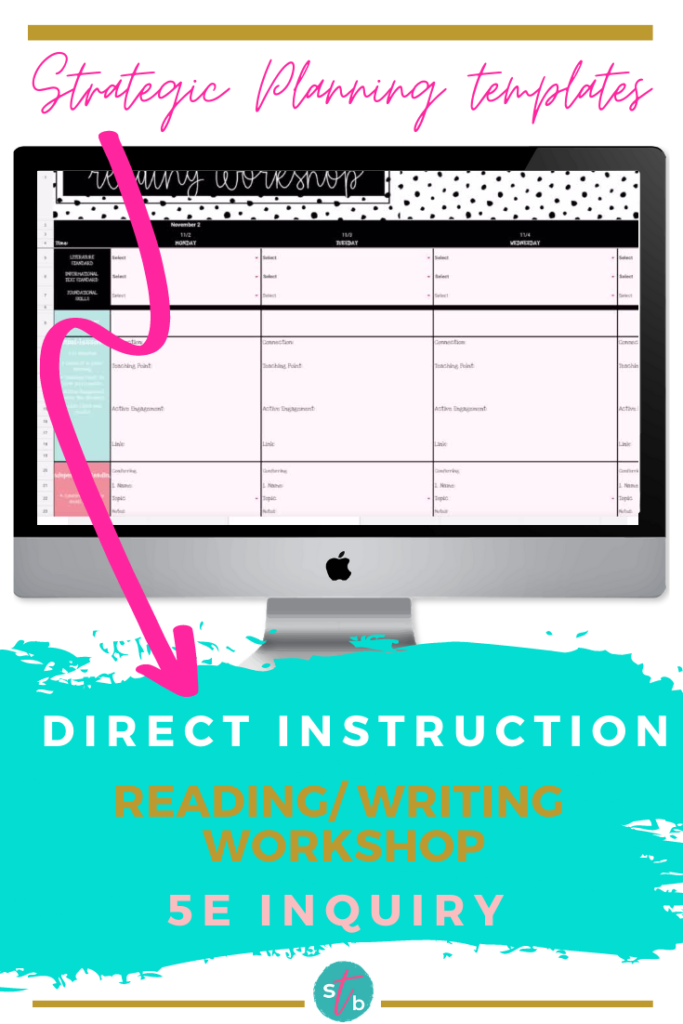
Following a framework, or lesson plan template, will prompt you to think through how you will teach the content. This will train your brain to consistently and methodically plan your lessons. Undoubtedly, this will make you more effective as a teacher and help your kiddos meet standards!
How an Instructional Framework Increases your Effectiveness
It ensures that you’ve thought through not only WHAT you want your students to know, but HOW they are going to achieve that knowledge. For more on learning intentions and lesson planning check out this POST.
Additionally, it FORCES (that’s right, FORCES!) you to incorporate all phases of a lesson or instructional framework. Sometimes, we, as teachers (not you, I’m sure) get a little lazy short on time and tend to skip steps or phases in presenting/ teaching new content. We teach tell it…we practice once or twice with the kids…and we send them off to independent work. Then we get frustrated that they JUST DON’T GET IT.
When you use an instructional framework in the form of a template, this doesn’t happen! All of the steps and phases of the RESEARCH-BASED (i.e. super effective) framework are accounted for.
Likewise, you can plan more ENGAGING lessons because you have thought through active participation strategies. When you add them into your lesson planning template, you are strategically planning for students to be engaged.
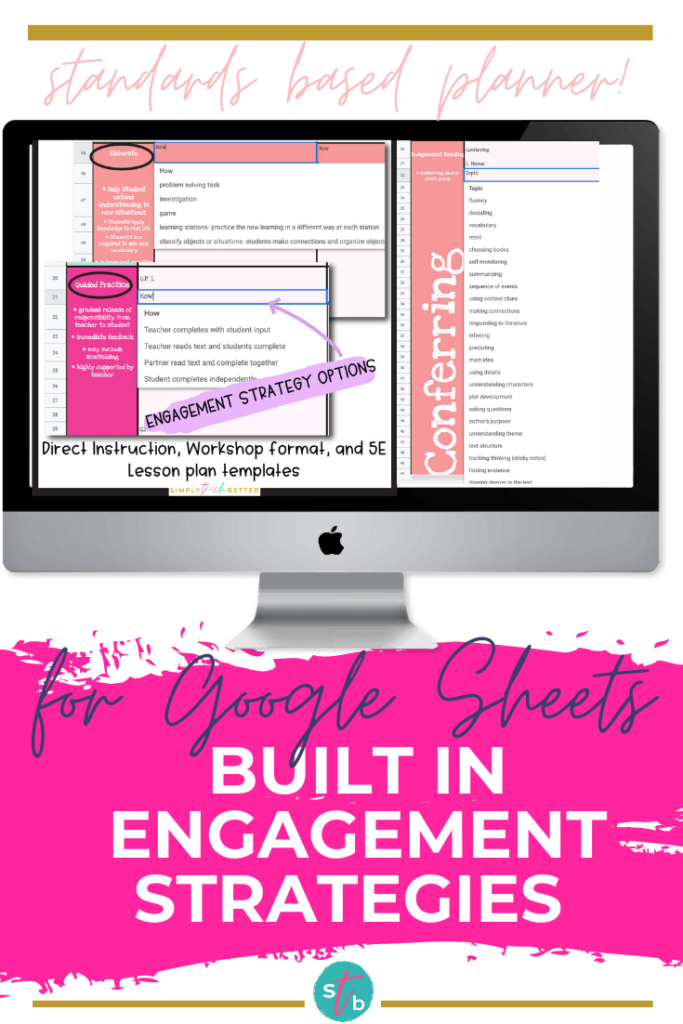
Finally, using an instructional framework and lesson template will forever please your Administration! Have to submit weekly lesson plans? Upcoming evaluation observation? Or just want to be their favorite?? Use a lesson plan template! It will prove you are teaching the standards, planning for active participation, and differentiating instruction. I dare you to provide me a principal that doesn’t want to SEE all that!
Instructional Framework Examples
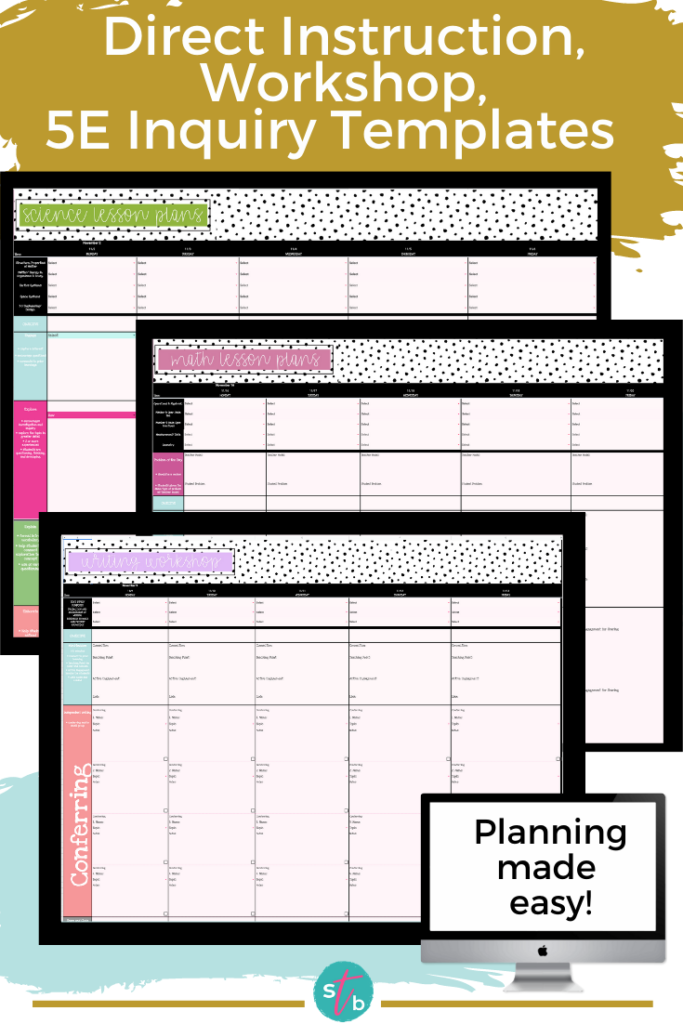
There are a few popular (for good reason) instructional models to consider using depending your purpose. Below, you will find a brief overview of the what/why/how of my 3 favorites!
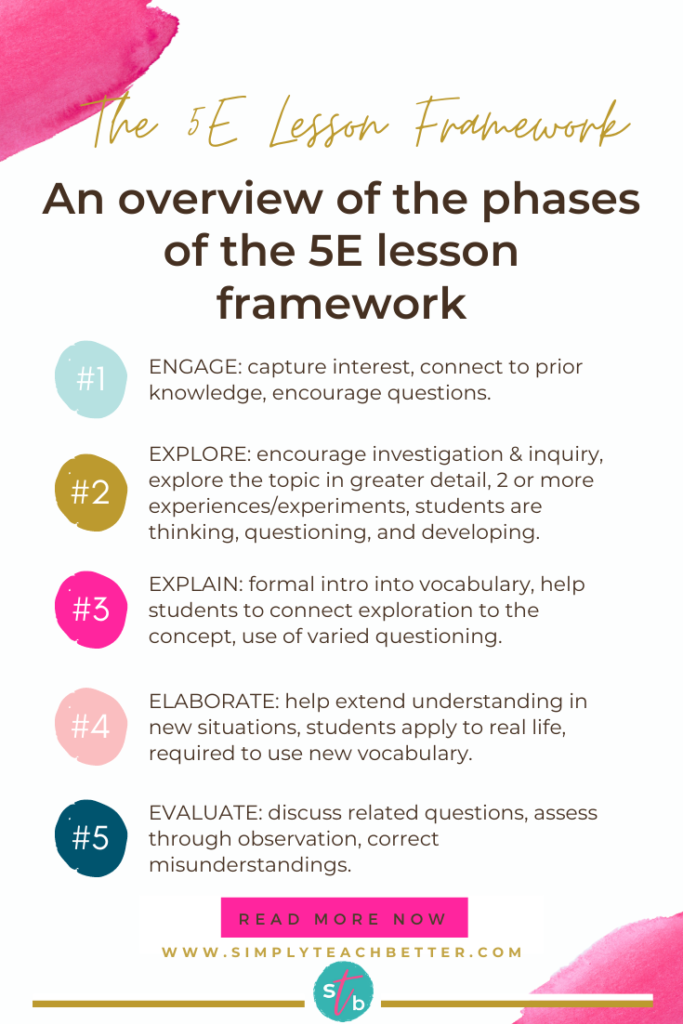
5E Lesson Plan
The 5E instructional framework consists of 5 phases: Engage, Explore, Explain, Elaborate, and Evaluate. This instructional model is best used in science, but you can easily adapt it to other content areas such as social studies.
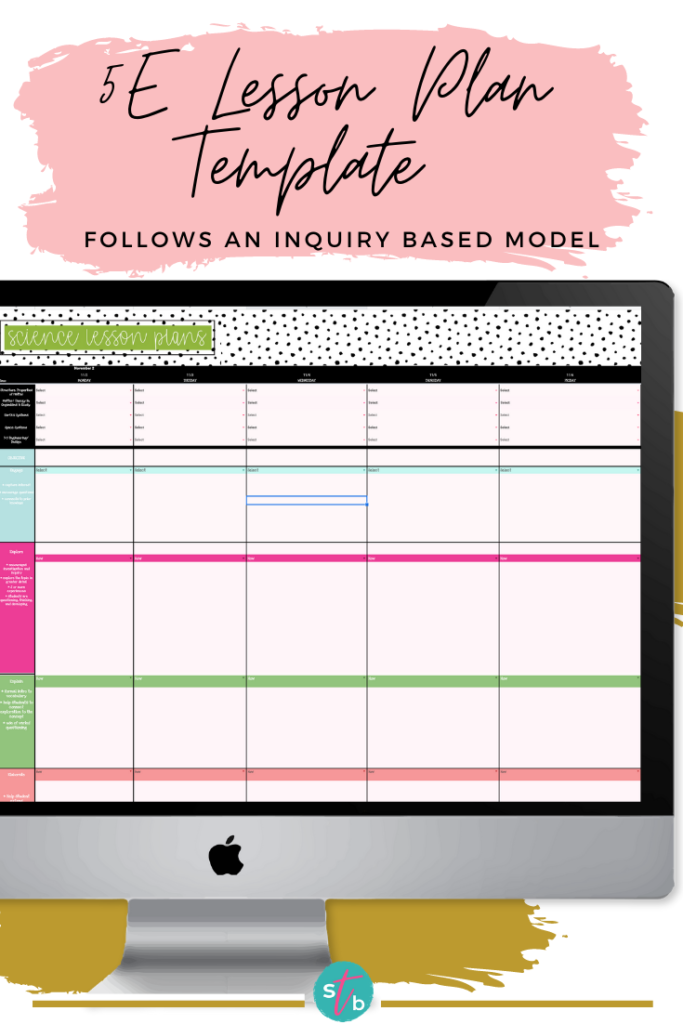
Want to know the ins and outs of this instructional framework? Check out this and this.
Direct Instruction Lesson Plan
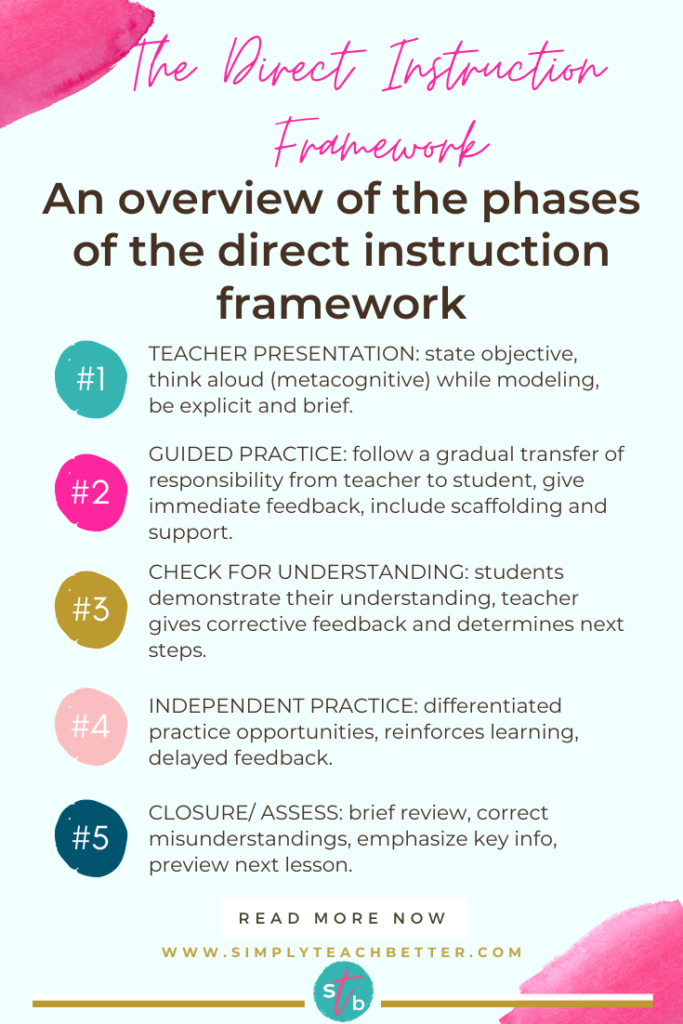
I’ve heard the Direct Instruction Model sometimes called the “Gradual Release Model” because essentially the teacher assumes all responsibility in the beginning and slowly, methodically transfers the responsibility to the students.
This instructional framework is probably most familiar and the one you would most likely use to teach across all content areas. This is the framework you want to use when you are teaching for mastery. You will use this framework when you are introducing a new skill or concept and want students to master it (i.e. most content knowledge, reading skills, math computation, or methods, etc). To put it simply, this model is highly effective, efficient, and will work for all students. See this model in use HERE.
This instructional model also consists of 5 phases:(sometimes 6 if you include the Objective as its own phase) Teacher Presentation, (Structured) Guided Practice, Check for Understanding, Independent Practice, and Closure.
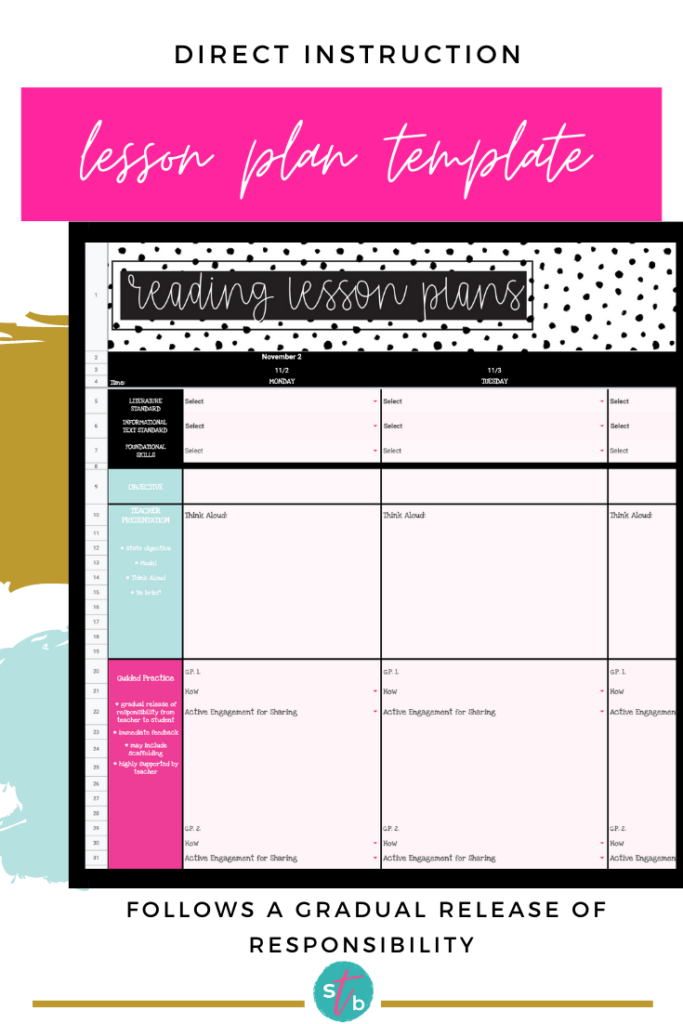
The Direct Instruction instructional model is also characterized by a high degree of student engagement, metacognitive “Think Alouds” by the teacher, and formative assessment along the way to inform the instruction.
Reading/Writing Workshop Lesson Plan
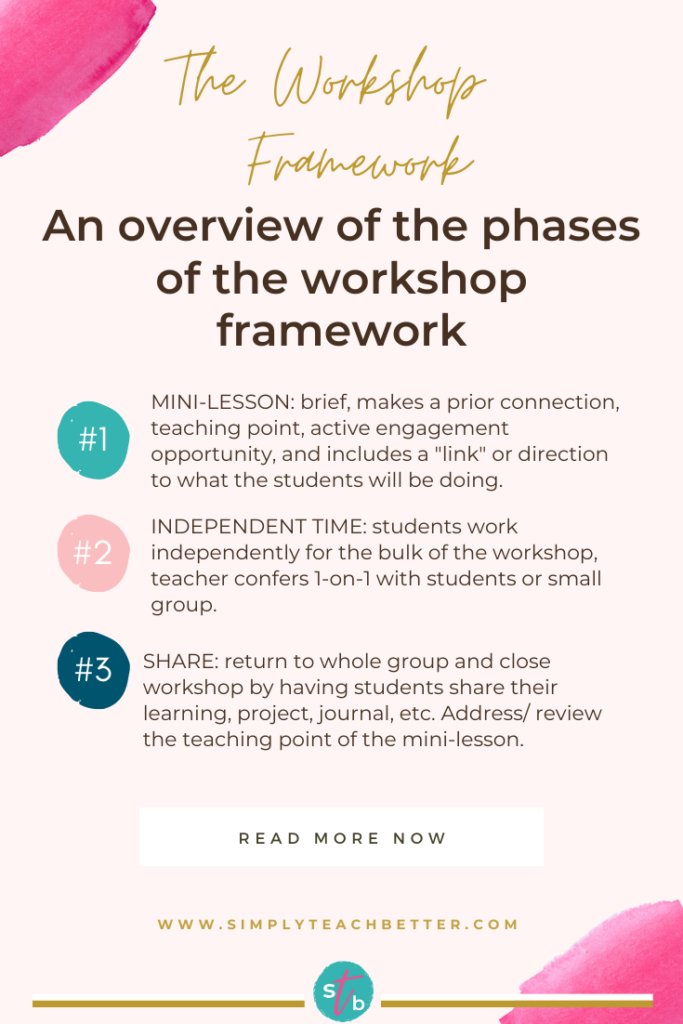
As you might be aware, the workshop model is most widely known for its use in the area of writing instruction. You can use it effectively in reading and math as well.
The workshop model consists of 3 main phases: the Mini-lesson, Independent Work Time, and Share/Closure. Most of the “work” is done during the Independent Work Time as the teacher strategically conferences with readers/ writers and focuses on an individualized teaching point.
I should note that this type of instructional framework for reading CAN be problematic and have a negative impact on student learning if teachers are not highly trained in this model. See Shanahan on Literacy for what the research says!
My advice for new teachers and teachers who haven’t been trained by an expert, is to stick with the Direct Instruction Model. It will be your BFF, make it so easy to teach well, and your kiddos will always know what to expect! If you are interested in becoming an expert at either reading or writing workshop, I highly recommend completing a summer institute at The Reading and Writing Project. I personally completed an institute there and the learning was invaluable!
An Instructional Framework Template for Google Sheets (AKA the problem-solver)
So… this is all great and well, Jen, but what am I supposed to do with this information when I have a bazillion other teachery things to do??? Once again, so glad you asked!
Now that you are familiar with instructional frameworks and why you NEED them, let me show you the easiest way to incorporate a framework into your teaching. Use the actual framework as a TEMPLATE to plan ALL your lessons. Seriously! Save time, energy, and valuable head space knowing that every week you have daily effective lessons ready to teach. No more Friday afternoon thoughts like, “How am I going to teach xyz on Monday???”
Do you want a done-for-you template/planner with the instructional frameworks that were discussed above? Keep reading to see how this template/ planner will bless your life immensely…
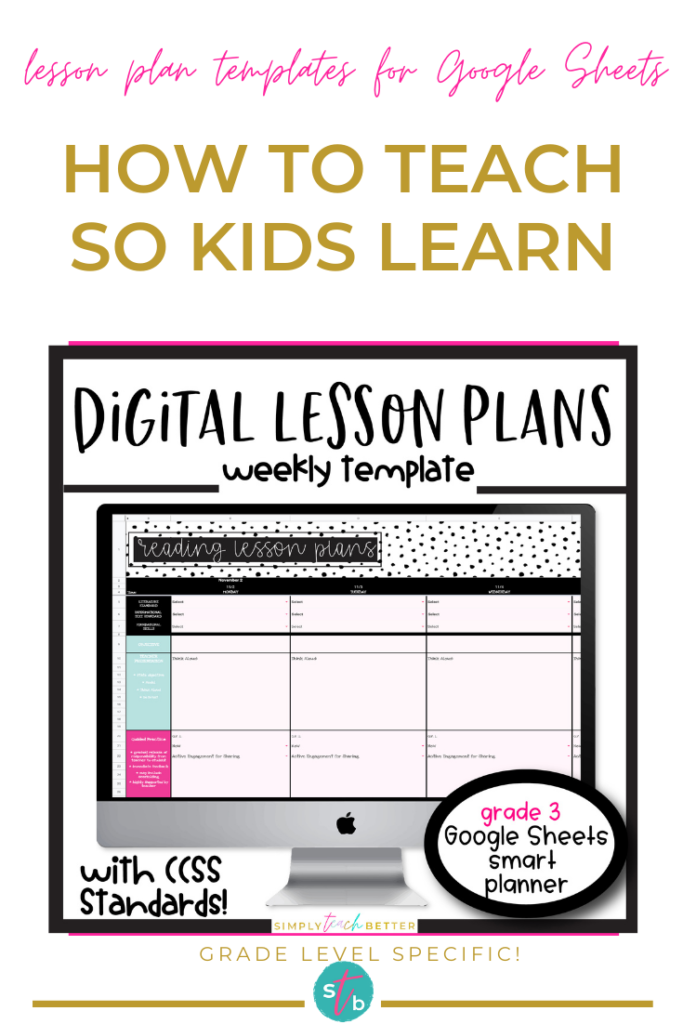
Standards Included
This Digital Planner/ Instructional Framework/ Editable Weekly Template (ahem, I still haven’t landed on a name that really describes it…) includes pre-loaded CCSS standards and NGSS standards and includes a video tutorial of how to add your state’s social studies/history standards. I love you all, but not enough to pre-load 50 different state history standards!!
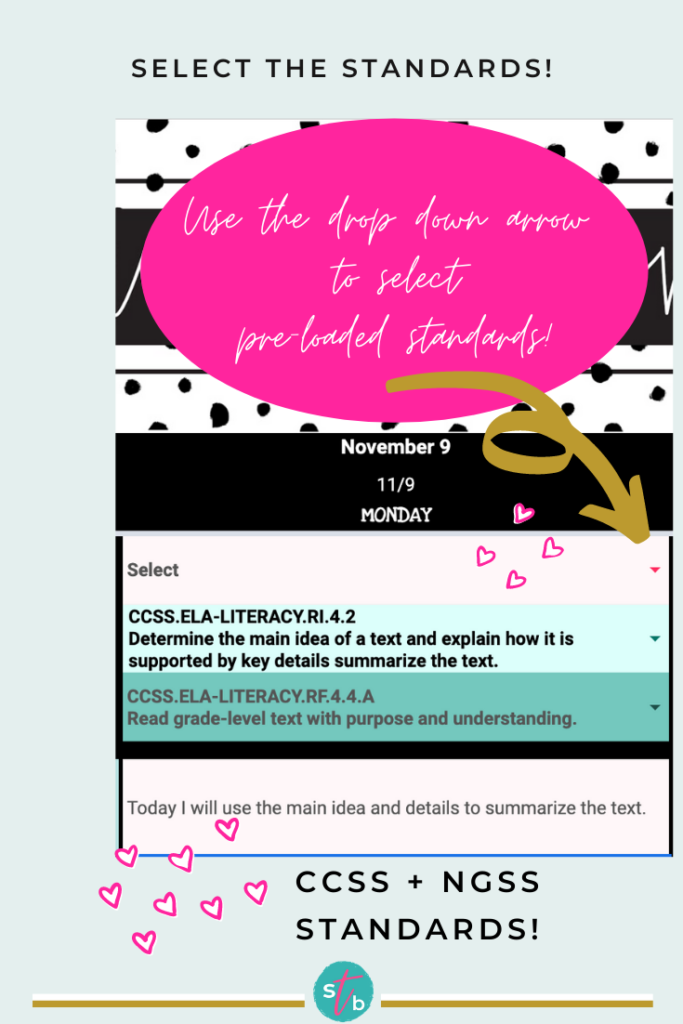
Core Subject Area Templates
All core subject areas in elementary have an instructional framework template. For reading, there is both a Direct Instruction template and a Reading Workshop template. Writing also has both a Direct Instruction and Writing Workshop template.
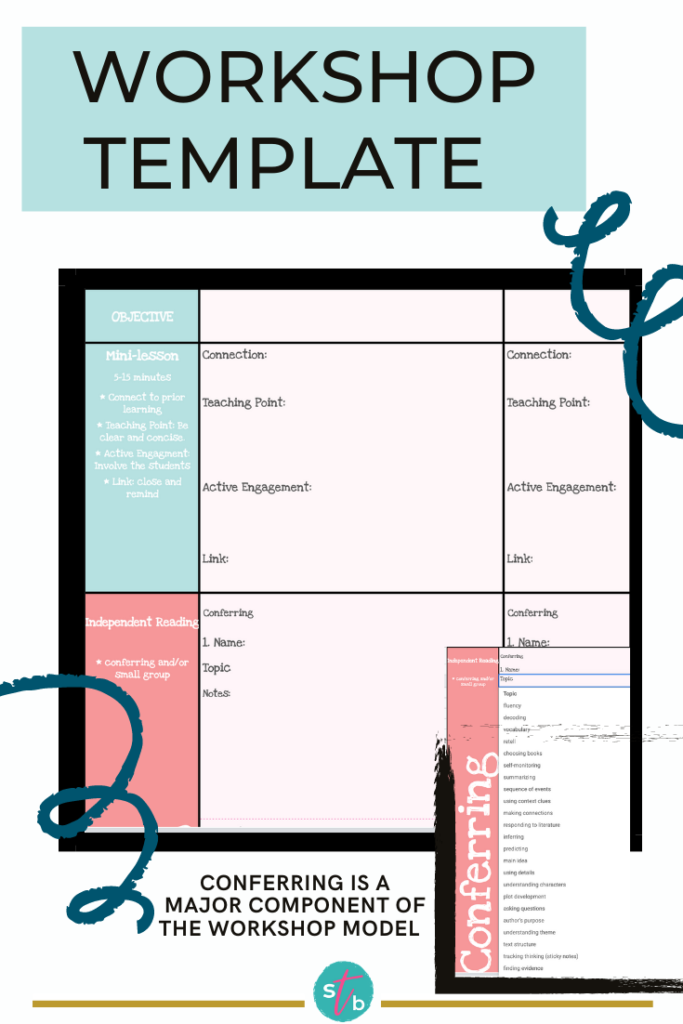
In addition, there is a separate “Conferring” scheduling page for both reading and writing complete with drop-down conferring ideas/topics for you to use.
There is a Direct Instruction template for math, and both science and social studies have 5E Inquiry templates.
Every template comes with drop-down menus for different phases of the instructional model. You can easily select pre-loaded engagement strategies, check for understanding activities, conferring topics, closure and formative assessment activities, and so much more! In addition, I have included space on every page that is formatted for small group instruction… with ideas!
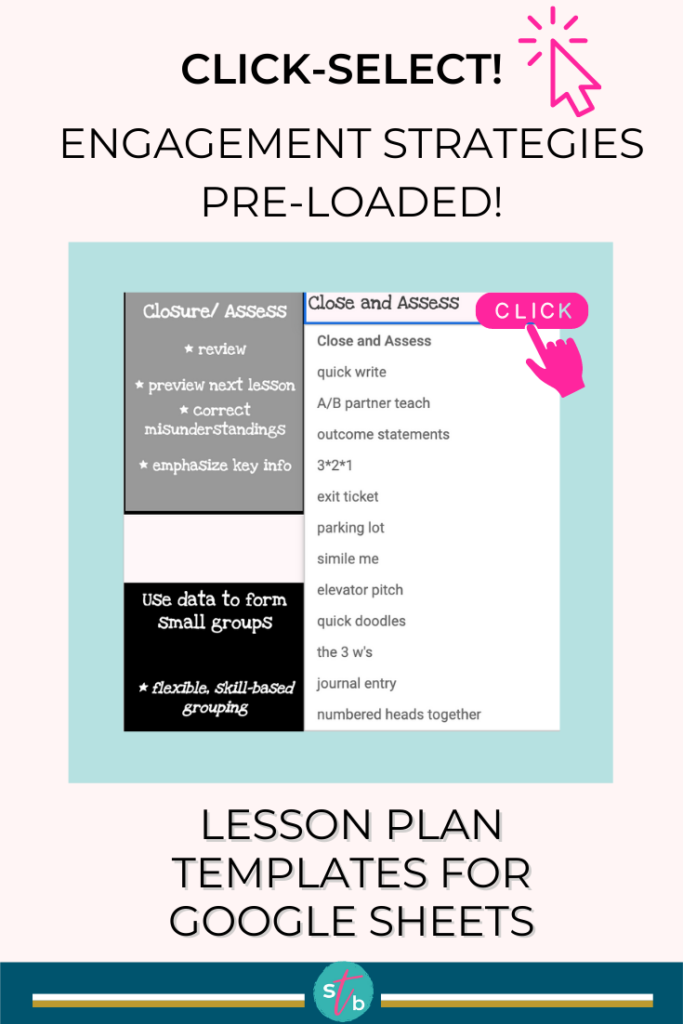
Easy to Follow Tips and Scripts
Additionally, each template also has helpful phase descriptions and ideas for what to incorporate. You will find these noted in the margins of each content area template. Think of it as your teacher cheat sheet for correctly moving through the phases of your instructional framework.
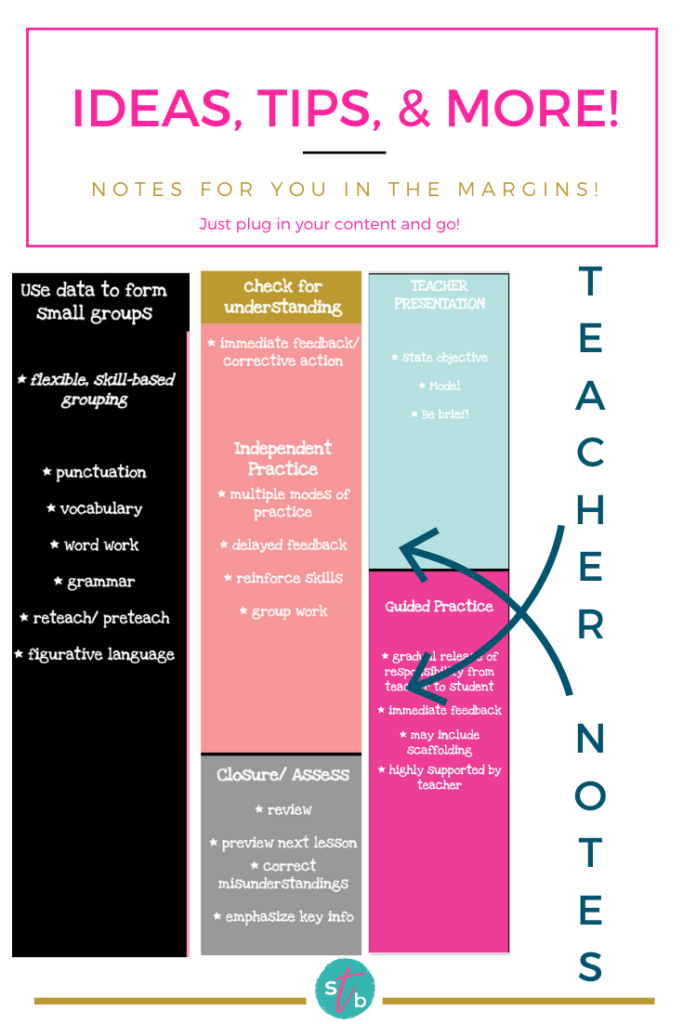
Edit and Customize
Lastly, you don’t need to be an expert in Google Sheets to use these templates. I would recommend some familiarity, but expert level not needed- not even close! I have formatted everything for you and all you need to do is type in the box to add your content!
You can easily change the date from week to week by clicking on it and selecting from the calendar. It will then fill in the correct dates for the remainder of that week across Monday-Friday.
You can use this template/planner/framework from year to year, from now until the end of time! You will simply keep 1 copy as a master and then duplicate a new copy every week.
Using an Instructional Framework
Using an instructional framework is invaluable! You will save so much time, effort, and sanity not trying to reinvent the wheel every time you teach a new concept or skill.
Bottom line- You need to teach in a research-based way.
You also need to teach in a way that your kids will be able to focus on WHAT is being taught, not HOW.
You should also teach in a way that allows kids to have the best chance of mastering the content.
Finally, teach in a way that saves your sanity and creativity for when it is needed.
Teach using an instructional framework.
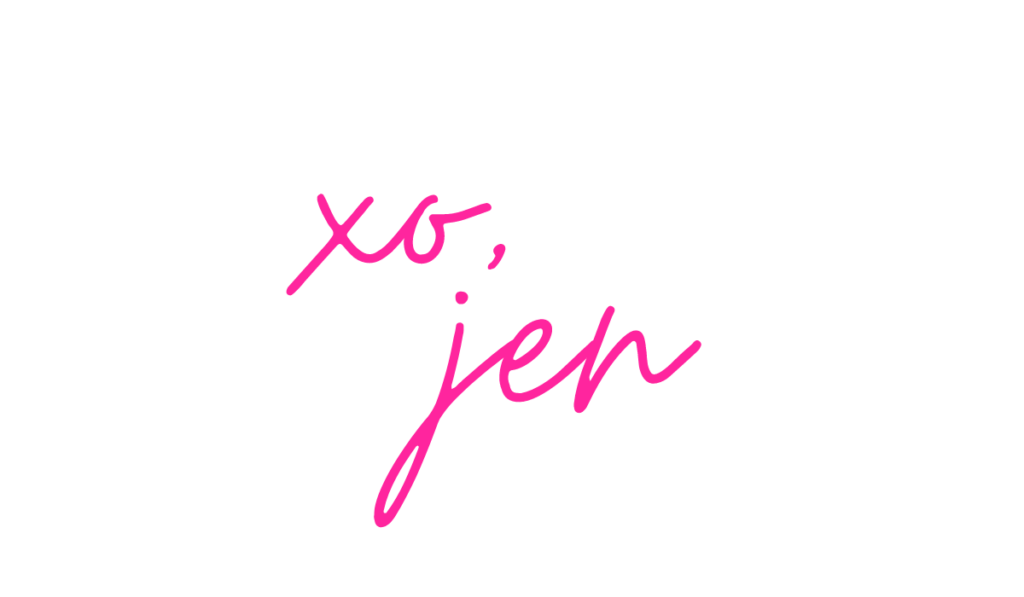

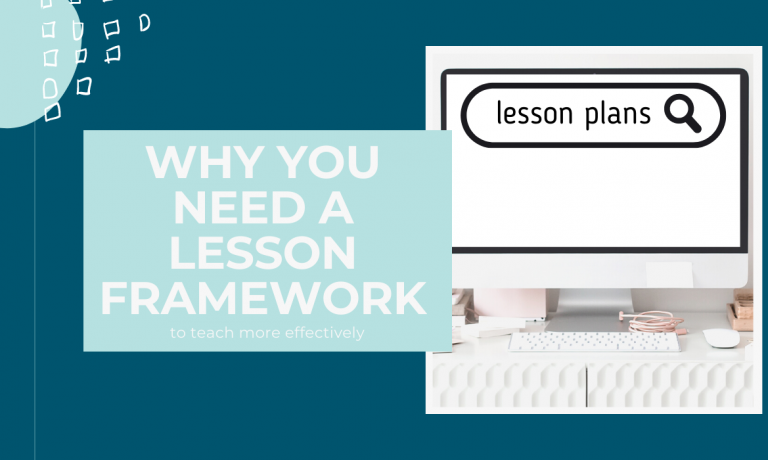
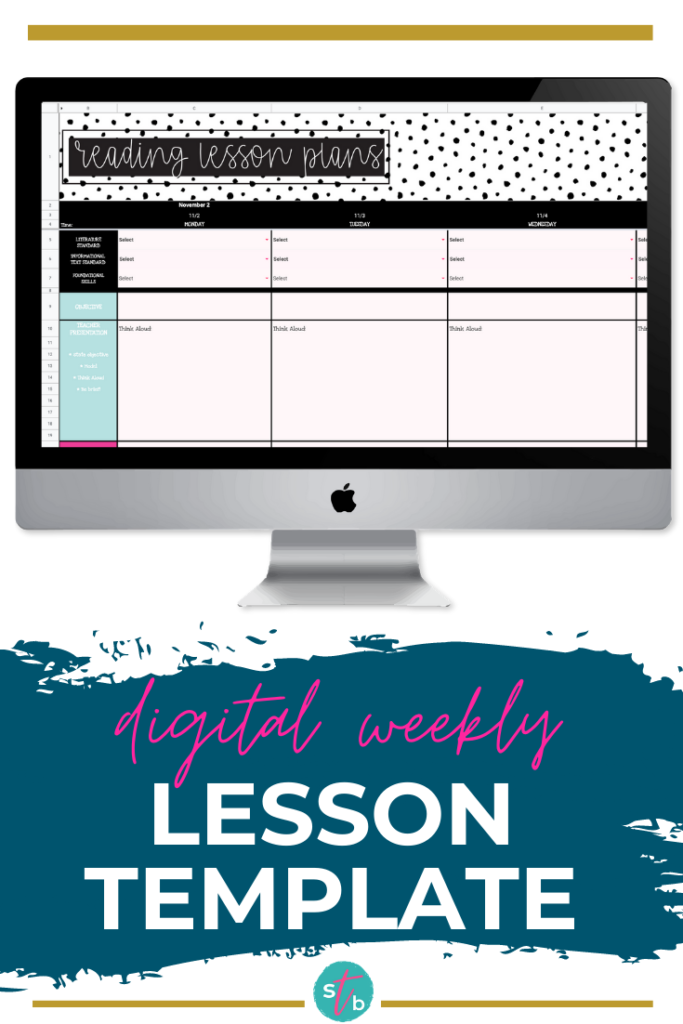
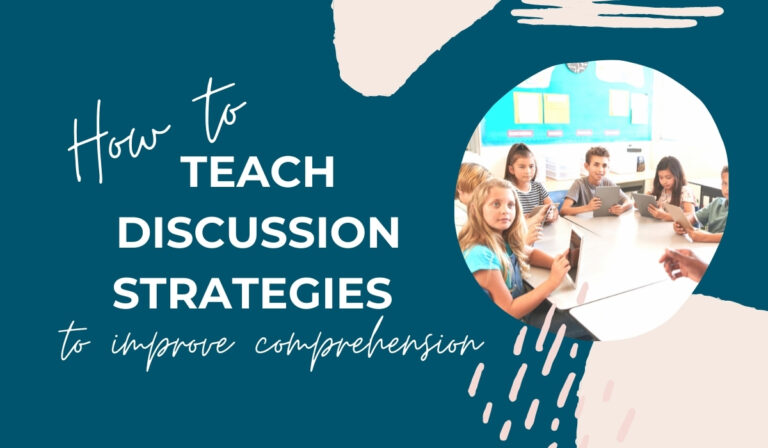
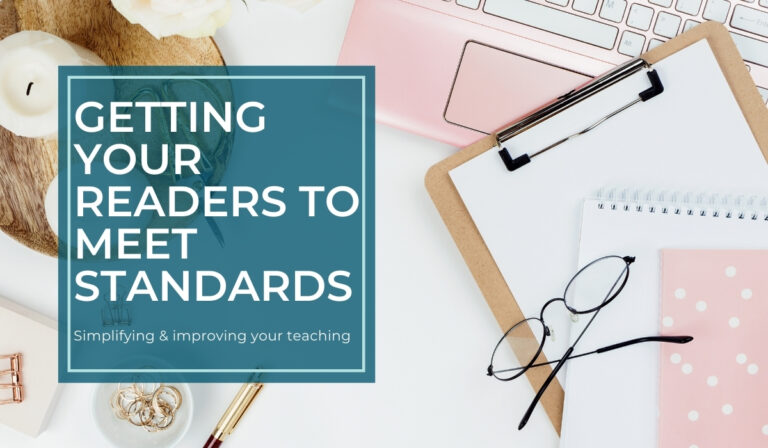
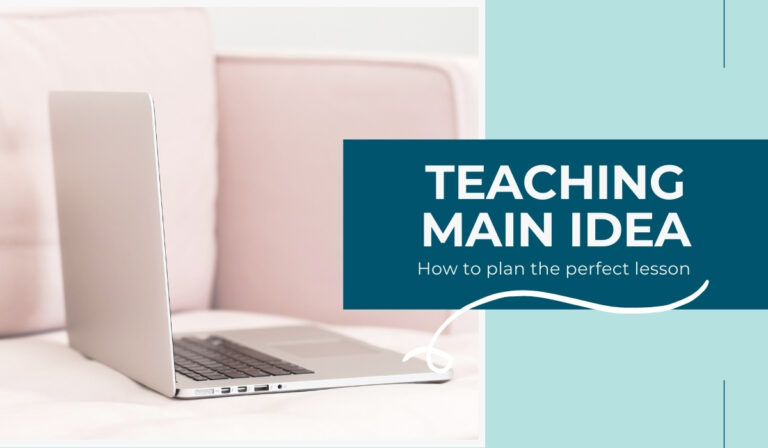

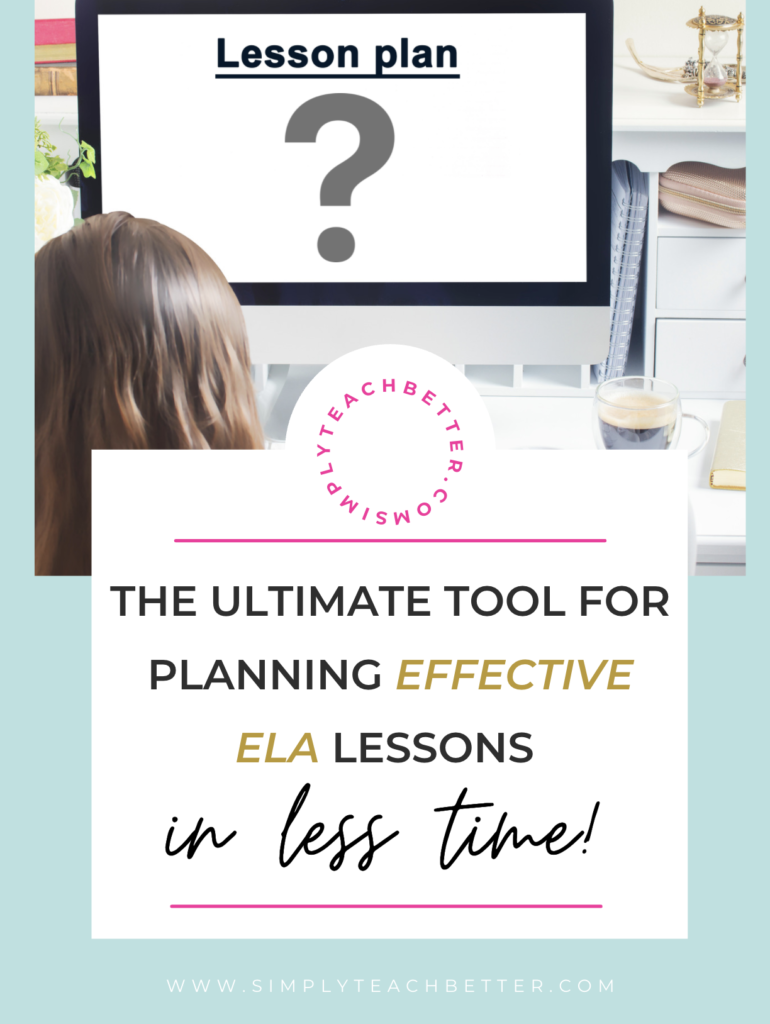
3 Responses
Wow, there is so much useful information here, thank you! You provide so many wonderful tools to really plan some amazing and effective lessons. I especially love how you get us thinking about purposeful instruction using evidence and standards to really maximize the value. Great tips, thanks again 🙂
I’m so glad you found it useful!
Oh wow! This is so detailed. I love how you explained different types of instructional planning templates. I’ve never been a teacher who could handle not having some type of plan and now I know the science behind why!